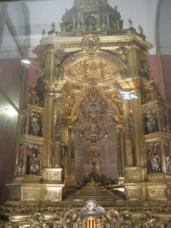We saw a lot of churches and cathedrals in Spain, but the Cathedral of Valencia could claim one mark of distinction that some of the much larger and more impressive ones couldn’t. Namely, it’s the final resting place of that most precious Christian relic, the Holy Grail itself. To see that and more, click to continue…
We left Granada early in the morning. I took this panoramic photo of the sunrise over the city from our hotel balcony:
A wind farm in the Spanish countryside en route. We happened to be traveling during the time of the year when the poppies are in bloom, which carpets the fields in fiery red:
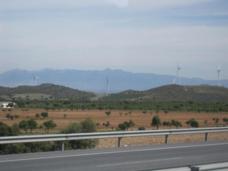 |
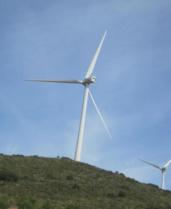 |
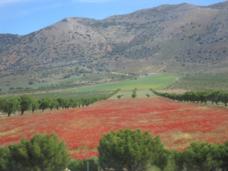 |
The Cathedral of Valencia was off one of the city’s main squares. It was a fair bit smaller than most of the other cathedrals we visited, though gorgeously decorated with art and sculpture in the classic baroque style.
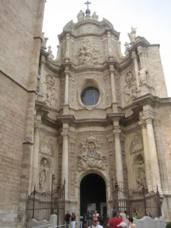 |
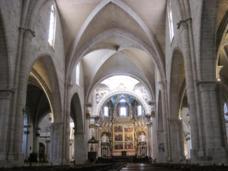 |
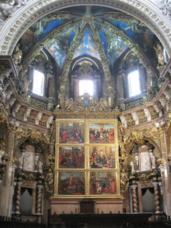 |
Since it wouldn’t be a proper cathedral without the church flaunting its vast wealth in the face of a country going through a major recession, here’s another huge golden monstrance:
And because every cathedral has to have something morbid and horrible, here’s the mummified arm of a long-dead saint, preserved as a relic behind the altar. Note that the fellow in the sculpture behind it, assuming it’s meant to be the same guy, is missing the wrong arm!
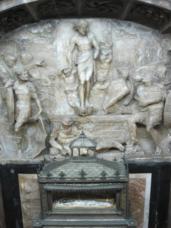 |
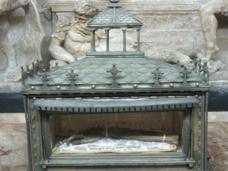 |
But what you really want to see is the Holy Grail, and the Cathedral of Valencia had that too. It was stored in a small chapel off the main nave, with rough stone walls and relatively little decoration compared to the gothic splendor of the main church. It was almost like something out of Indiana Jones, the kind of place you might find after stumbling through a hidden revolving door in the wall. And in a display case on the wall, here it was: behold, the cup of Jesus Christ himself!
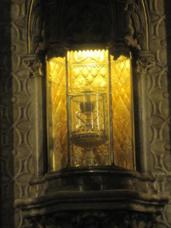 |
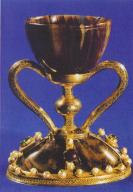 |
Now, you might say that there’s an obvious problem here: if there was a real Jesus, he wasn’t wealthy and probably didn’t drink out of a golden cup decorated with gemstones. But the church has the answer to that! Those decorations were added by the faithful over the ages, you see. I got a small pamphlet from the church’s gift shop (which was run by an extremely stern-looking nun) which explained in somewhat fractured English that although there’s nothing but legend about its whereabouts prior to the 1300s, “nothing can be said against the idea” that it’s the genuine article. See? Take that, atheists!
But I’d be remiss if I gave the impression that Spain was all gloomy churches and fake relics. One of the other highlights of Valencia was the City of Arts and Sciences, a famous and eye-catching complex of museums and theaters designed by the architect Santiago Calatrava. We saw it all lit up at night:
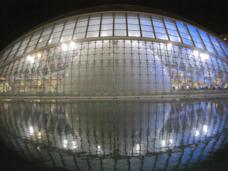 |
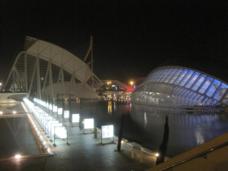 |
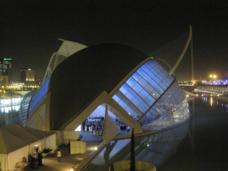 |
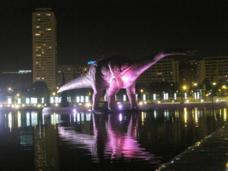 |
Coming up next: Our last stop in Spain was Barcelona, where we saw the Sagrada Familia cathedral and the monastery of Montserrat.

